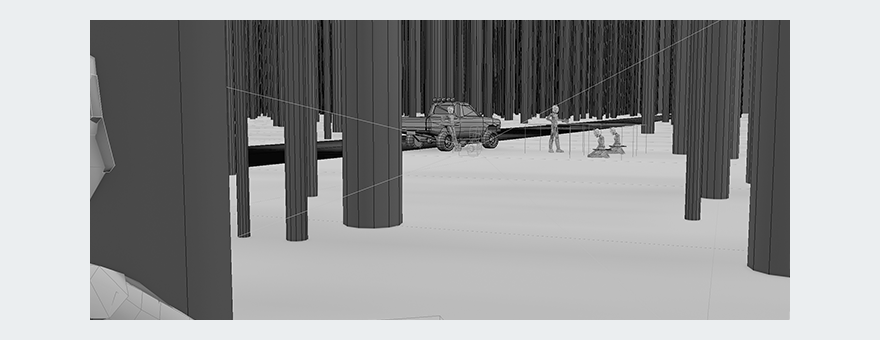The Making of an Animatic
Bailey Kalesti
No art to show this week, so I’m showing a little behind the scenes. Personally, I love looking under the hood of a project, so I hope this is interesting to someone.
My main task right now is creating the animatic. During this process I’m addressing three important aspects that are shaping the movie:
- Staging
- Cinematography
- Editing
The initial boards I made were loose and I focused on finding a visual language. After creating the third batch of thumbnail sketches, I spent a day placing them into a non-linear editor.
The third batch.
I feel that the staging process is like solving a puzzle. I look to the script and determine all the actions that need to happen to move the story along. The hard part is adapting the ideas into a space, where action happens. Working from an overhead perspective, I literally just scribble ideas for camera angles, player movement, and interactions throughout the scene. When I’m building it, I’m thinking about technical limitations (based on visual direction), composition, eye-tracing, and 2D screen-space rules.
The cinematography has been fun for me. I’ve been getting coverage of each scene, which has helped the editing process. And I’ve been working on shot composition, which is an art form unto itself. Naturally, I feel like a complete novice. Creating a still with coherent composition is hard enough, and then adding the element of time makes it all the harder. As Joseph Mascelli says in The Five C’s of Cinematography (which I highly recommended), “Good motion picture scenes are the result of thoughtful compositions and significant movements, of players and/or camera. Unsatisfactory scenes are the results of thoughtless compositions and meaningless player or camera movements, which distract rather than aid in the story-telling.”
Editing affects the shots too. Sometimes I don’t feel I can cut to a certain angle in the given time, which makes me reevaluate my camera choices. And because this is a music-driven story, everything needs to work harmoniously with the score. So, Hunted is really a series of music-supporting sequences that move the story and emotion along a pre-defined arc. And for even the simplest scenes to work, composition, staging, music, editing, and design must cooperate. That’s really the beauty of film. It’s the convergence of so many art forms…each one potentially elevating the art to higher and higher levels.
A very early timeline.
Hunted is a simple film, but I know it will continue to push me to my limits. This is why whenever I watch a particularly well made movie, I can’t help by sit in awe. Good movies are hard to make. I can’t say if my film will be good, but I’ll pour everything I’ve got into it.
I’ll post a clip of the animatic next week (November 7th)!
Bailey



